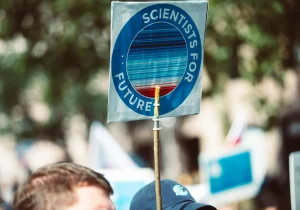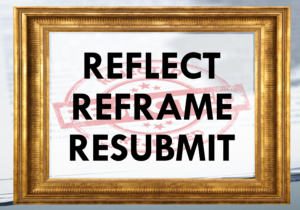Beginner’s Eye for the Science Guy (or Gal)
The beginner’s eye, not to be confused with Bette Davis eyes, is looking at things as if you’ve never seen them before. What if you reviewed your last several months’ worth of experiments as if you’ve never seen them before – no hypothesis, no preconceived notions, just a clean slate and a basic understanding of your science (hey that sounds like a reviewer!).
Beginner’s eye is critical in science. Consider your favorite hypothesis. I intentionally use the word favorite, because we get an idea about what is going on and start to build on it. As we build, we limit our analysis to the context of our working assumptions. Or maybe that’s just me.
For example, I recently had an interesting observation about a protein I’m working with. I got enough data to form a hypothesis, and then recently found something that contradicts the hypothesis. Do I explain it away, or take a closer look? The contradiction kept popping up, and I now feel compelled to take a closer look. I plan to revisit my recent work, as best possible, with a fresh eye and see what comes up.
Of course, there are ways to help keep our mental tendencies for bias on the straight and narrow. The whole “rigor and responsibility” thing for NIH grants is geared towards this, even though it was developed as much or more for public accountability as for scientists. Nevertheless, as scientists we can and should take these elements to heart to improve our work. Consistent use of positive and negative controls (ok I’m really going back to the basics here), blinded analysis, sufficient replicates, etc all help subdue the “demon bias”. Getting a fresh look from a colleague unfamiliar with your work can help too. Besides making for better science, you’ll probably uncover some potential objections from reviewers that you might not have otherwise noticed.
Although keeping bias out of work is always a good thing, the main benefit to the beginner eye is seeing something you haven’t before. As Mrs. Potts from Beauty and the Beast says, or more accurately sings, “There may be something there that wasn’t there before.” For those of you who aren’t Disney fans, try this quote from Shuryu Suzuki,
“In the beginner’s mind there are many possibilities, but in the expert’s there are few.”
This quote is worth sitting with for a moment. Think about all of the mental constraints that you’ve built up based on past experiences. No, I’m not just talking about science anymore. There are entire books about the implications of this idea, so I’ll leave it for you to think about. Let me instead suggest a treatment. Note I said treatment because there is no cure. We all interpret life through the bias of our experiences, but awareness of this bias helps. I mentioned taking a fresh look at old data, but you can practice taking a fresh look at life. Consider the water coming from your shower head as something you’ve never seen before, or the cold closed box of your refrigerator. Wonder at the usefulness of a door knob. Try this for even five or ten minutes, and you’ll be amazed at the world around you.
Related Resources:
Three Tips for Writing to Non-Specialists
Fresh Ideas for Writing Innovation in Your NIH Grants
Not that Kind of Year: Tales of Year 1 as a New PI
Home Page ImageCreator: Joseph Anson
Source: Joseph Anson on Unsplash" target="_blank">Photo by Joseph Anson on Unsplash






0 Comments